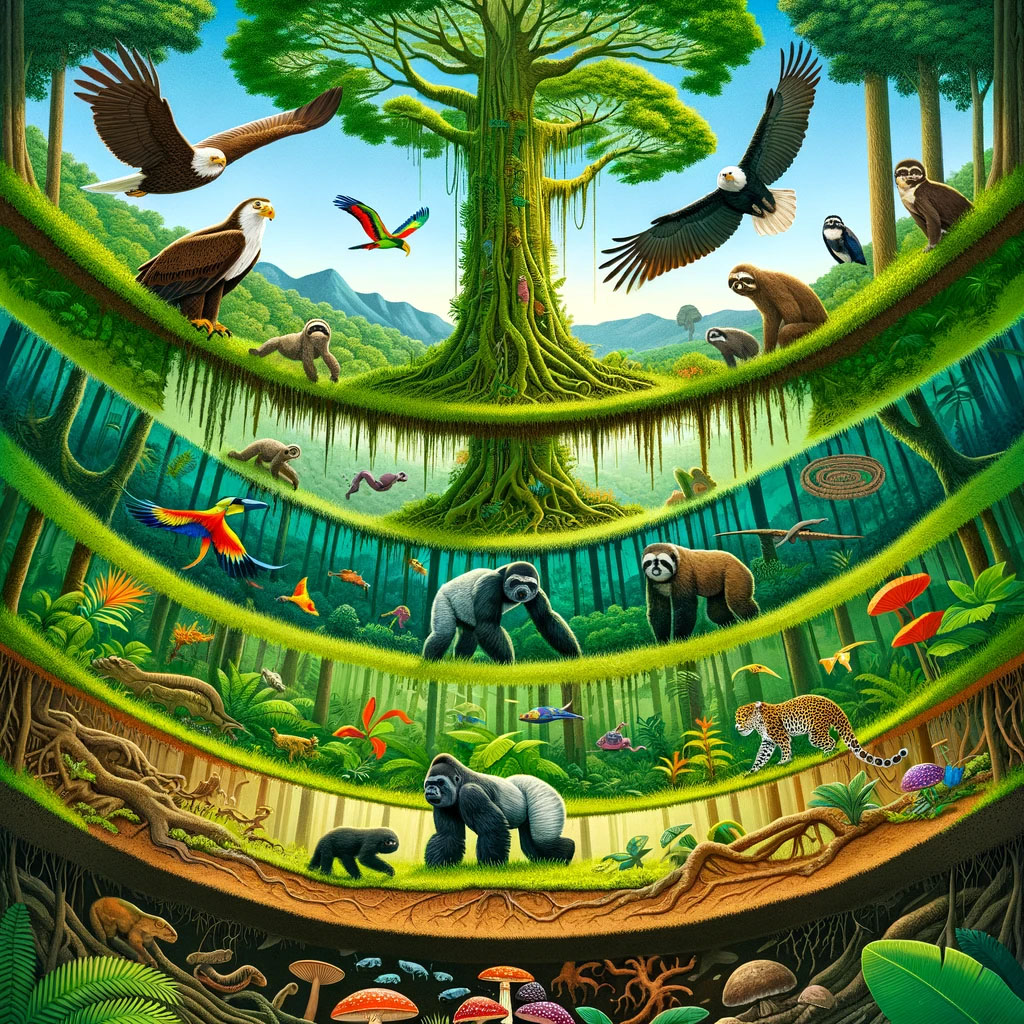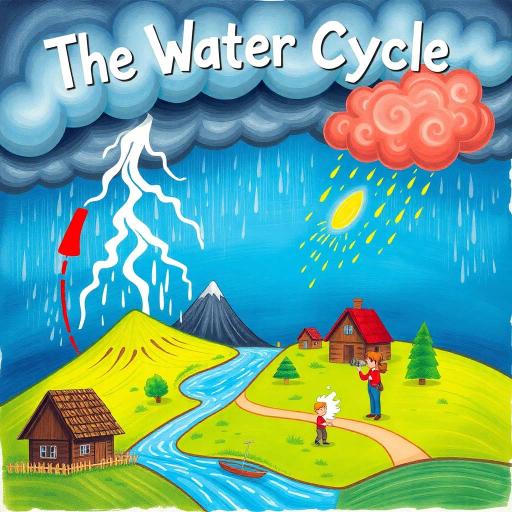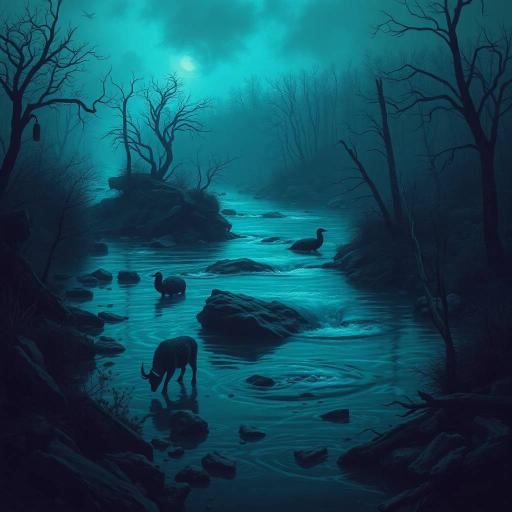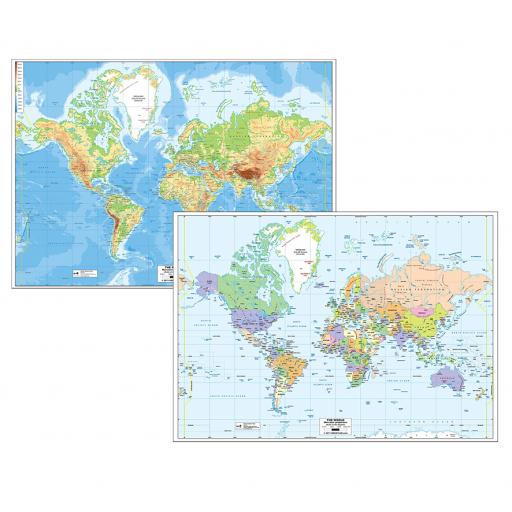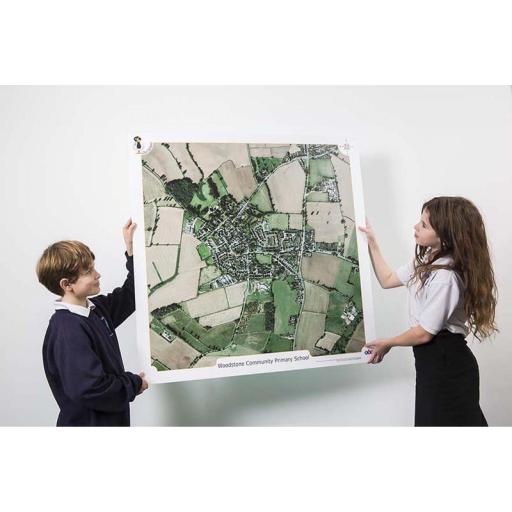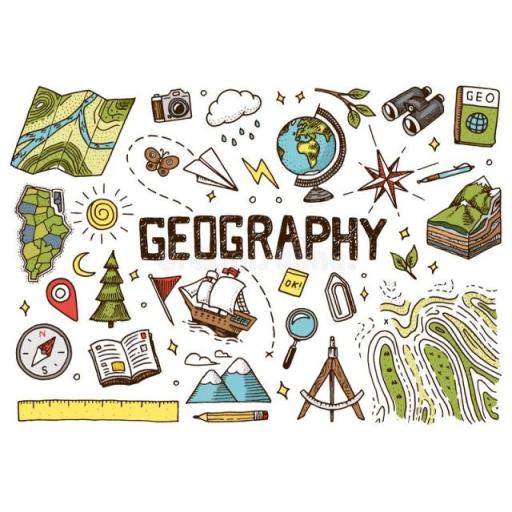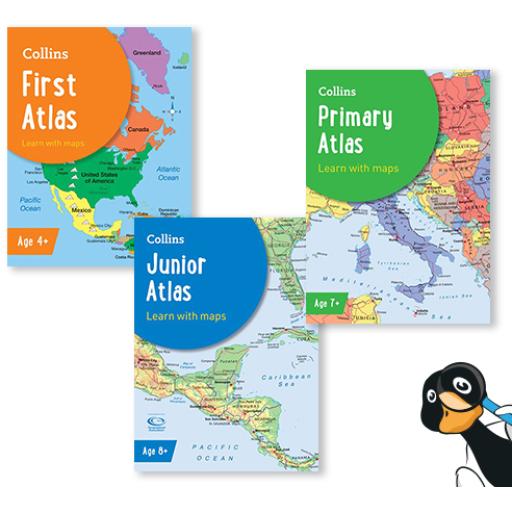Introduction
Imagine a place so full of life, where every corner you turn, you find a new kind of plant or animal you’ve never seen before! This is the rainforest, a magical, lush area that covers only a small part of the Earth but is home to more than half of our planet's wild plants and animals. Rainforests are not just important for the creatures that live there; they are crucial for the health of our entire planet. They help control the world’s temperature and weather patterns, and they are fundamental in making the air we breathe clean and breathable.
Rainforests are truly fascinating, and today, we are going on an adventure to learn more about these incredible places. So, grab your explorer hats, and let's get ready to dive into the mysterious and enchanting world of the rainforest!
What is a Rainforest?
A rainforest is a dense, tropical forest that receives a lot of rain all year round. There are two main types of rainforests: tropical and temperate. The tropical rainforest is found near the equator, where the weather is warm and humid all day and all year long. The temperate rainforest, on the other hand, is found farther from the equator, in coastal areas where the climate is cooler but still very wet.
Rainforests are spread across the world, with the largest tropical rainforest in the Amazon, which spans across nine countries in South America. These forests cover only about 6% of the Earth’s surface but hold more than half of the world's species of plants and animals. Imagine that! A small patch of land with so many lives depending entirely on it!
Layers of the Rainforest
Rainforests are like giant, green layer cakes, with each layer offering a different habitat and playing a vital role in the overall ecosystem. There are four main layers that we will explore: the emergent layer, the canopy, the understory, and the forest floor.
1. Emergent Layer
The emergent layer is the topmost layer of the rainforest and consists of the tallest trees, reaching heights of up to 200 feet! These giant trees are well above the rest of the forest and have huge umbrella-shaped canopies that tower over everything else. This layer is exposed to lots of sunlight, making it a perfect spot for birds like eagles and butterflies to soar high in the sky. It’s windy up here, but the view is incredible!
2. Canopy Layer
Just below the emergent layer is the canopy, which is the primary layer of the rainforest. This layer is made up of the upper parts of many trees and forms a thick roof over the rainforest. It is the most lively and bustling part of the rainforest, home to over 50% of the rainforest's wildlife. Animals such as sloths, tree frogs, and many birds live here, moving among the branches filled with fruits, nuts, and leaves. The canopy is so dense that it can be dark below it, and it protects the layers underneath from heavy rains.
3. Understory Layer
The understory is a dark, cool environment located beneath the canopy. This layer receives very little sunlight and is home to plants with large leaves that can capture the limited light. The understory is a haven for animals that prefer less light and more moisture. Here, you might spot jaguars quietly stalking their prey or colorful birds like toucans navigating through the foliage. It's a mysterious and shadowy place, where every step reveals new secrets!
4. Forest Floor
Finally, at the bottom of the rainforest is the forest floor. It’s surprisingly clear of vegetation because only about 2% of the sunlight at the top makes it down here. The floor is covered with a layer of decomposing leaves and branches, which are broken down by decomposers like fungi and earthworms. This rich, dark soil helps new plants to grow. The forest floor is also where larger animals like gorillas and elephants can be found, making their way through the trees.
Each layer of the rainforest supports different forms of life, contributing to the biodiversity that makes these forests so special and important.
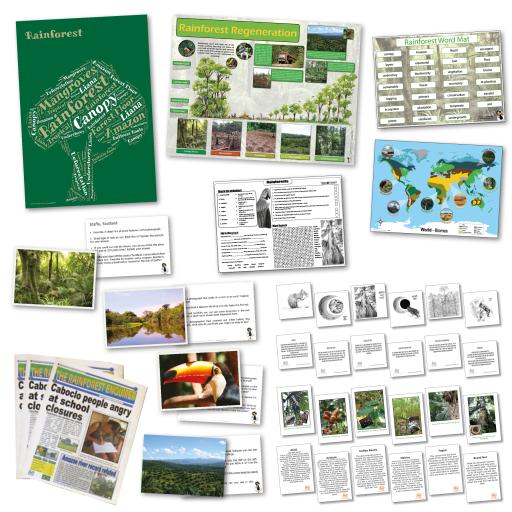
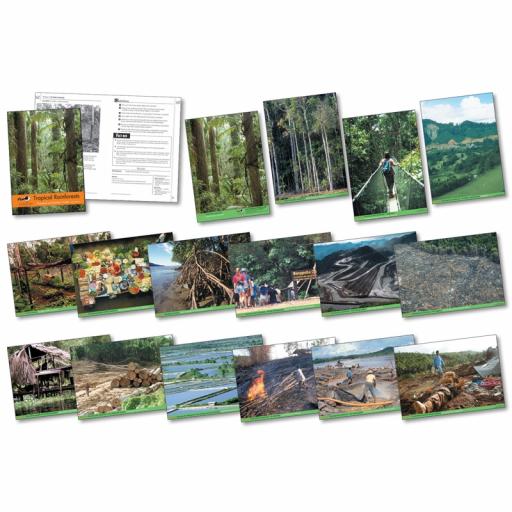


Flora and Fauna of the Rainforest
Rainforests are bustling with life, boasting some of the most diverse and unique species on the planet. This vibrant ecosystem is home to an astonishing variety of plants and animals, many of which are found nowhere else in the world. Let's explore some of the fascinating flora and fauna that call the rainforest their home.
Flora: The Green Heart of the Rainforest
-
Rubber Trees (Hevea brasiliensis): These trees are crucial to the global production of natural rubber. Native to the Amazon, their sap, called latex, is harvested by making careful cuts into the bark. Children might find it interesting that the rubber used in their erasers and some toys comes from these large, leafy trees!
-
Orchids: With over 25,000 species, orchids are one of the largest and most diverse flower families in the world. They thrive in the moist, warm climate of the rainforest, often growing on the branches of trees to access better light. Their vibrant colors and intricate shapes are perfectly adapted to attract specific pollinators, such as hummingbirds and butterflies.
-
Bromeliads: These plants are experts at collecting water in their thick, tightly packed leaves, which form a bowl shape at the base. The water trapped inside serves as a mini-ecosystem, providing habitat for various creatures, including frogs, insects, and even some small mammals!
Fauna: The Wild Inhabitants of the Rainforest
-
Jaguars: These magnificent big cats are the top predators in the rainforest. Their powerful bodies and camouflage fur allow them to move through the forest and pounce on prey unseen. Jaguars are crucial for maintaining the balance of the ecosystem by controlling other animal populations.
-
Toucans: Known for their large, colorful beaks, toucans are one of the most recognisable birds of the rainforest. Their beaks are not just for show; they help them to reach fruit on branches that are too small to support their weight, and they also use them to skin their food.
-
Sloths: These slow-moving animals spend most of their lives hanging upside down in the trees. Their long claws grip the branches while their greenish-colored fur, which comes from algae growing on it, provides excellent camouflage among the leaves.
-
Poison Dart Frogs: These tiny frogs are famous for the powerful toxins they produce, which native tribes once used to poison the tips of their blowdarts. The bright colors of poison dart frogs warn predators about their toxicity, a brilliant survival strategy!
The adaptations of these plants and animals are not just fascinating—they are crucial for their survival in the competitive environment of the rainforest.
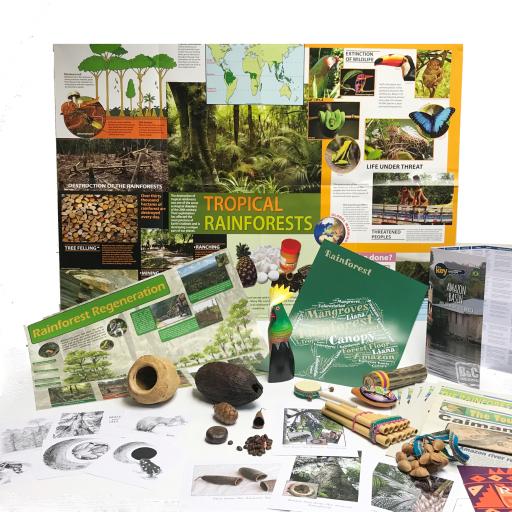
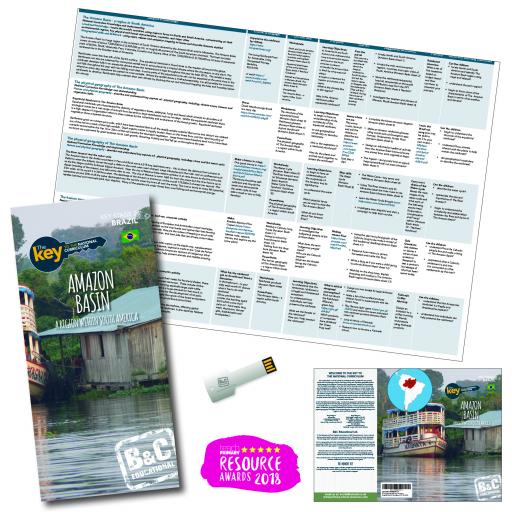
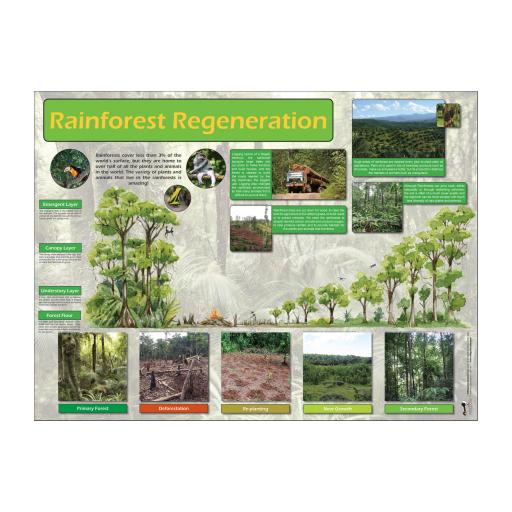
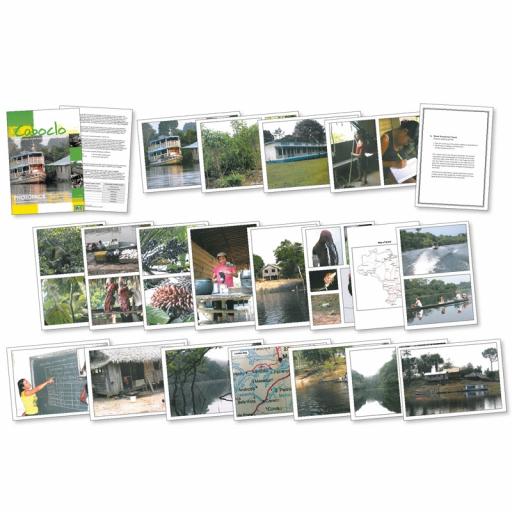
Rainforests of the World
Rainforests, though scattered around the globe, share many common traits, including dense vegetation, diverse wildlife, and significant roles in the Earth's ecological balance. Here, we'll look at some of the major rainforests of the world, each a vital part of its local and the global environment.
1. Amazon Rainforest
- Location: Spread across nine countries in South America, with the majority in Brazil.
- Size: Approximately 5.5 million square kilometers, it is the largest rainforest in the world.
- Biodiversity: Home to about 10% of the known species on Earth, including unique plants, animals, and Indigenous tribes.
- Key Facts: The Amazon is often referred to as the "Lungs of the Planet" because it produces about 20% of the world’s oxygen. It's also crucial in regulating the Earth’s climate.
2. Congo Rainforest
- Location: Central Africa, primarily in the Democratic Republic of Congo.
- Size: Around 3.7 million square kilometers, making it the second-largest tropical rainforest.
- Biodiversity: Contains over 600 tree species and 10,000 animal species, including gorillas, chimpanzees, and forest elephants.
- Key Facts: The Congo Rainforest has a significant impact on the climate of Africa and acts as a vital carbon sink, helping to offset CO2 emissions globally.
3. Southeast Asian Rainforests
- Location: Stretches across several countries, including Indonesia, Malaysia, and parts of the Philippines and Thailand.
- Size: Smaller than the Amazon and Congo but incredibly dense and diverse.
- Biodiversity: Renowned for its incredible species richness including the orangutan, Sumatran tiger, and countless bird species.
- Key Facts: These rainforests are under severe threat from palm oil production, logging, and urban expansion, leading to critical habitat losses.
4. Australian Rainforests
- Location: Mostly concentrated along the northeast coast of Queensland.
- Size: Relatively small compared to others but intensely rich in biodiversity.
- Biodiversity: Features a mix of tropical and temperate species, including the ancient Gondwanan flora and fauna.
- Key Facts: The Australian rainforests are known for their ancient species, some of which have been around for millions of years, providing insight into the earth’s ecological past.
Each of these rainforests, while unique in their characteristics, faces challenges from human activities such as deforestation, which threatens their existence and the global benefits they provide.
Conclusion: Protecting Our Planet's Lungs
As we have journeyed through the lush, vibrant world of rainforests, we've uncovered the layers of life that form these magnificent ecosystems. From the towering emergent trees to the rich forest floor, rainforests are not just fascinating biological hubs but also crucial pillars of the Earth's environmental health.
The Importance of Rainforests
Rainforests are often called the "lungs of the planet" for a good reason. They play a critical role in absorbing carbon dioxide and producing oxygen, which helps fight climate change. Additionally, they are home to an incredible diversity of life, supporting millions of species, many of which are yet to be studied. Rainforests also regulate local and global weather patterns and provide essential resources for medicine, food, and materials.
Engaging Young Minds and Hearts
For teachers and children, understanding the significance of rainforests can be the first step toward lifelong advocacy for conservation. Here are a few ways educators can help nurture a sense of responsibility and curiosity about the natural world:
-
Interactive Learning: Use stories, crafts, and games to teach children about the layers of the rainforest and its wildlife. Creating dioramas or drawing rainforest scenes can make the learning process engaging and memorable.
-
Field Trips and Virtual Tours: Although visiting a rainforest might not be feasible for everyone, virtual tours can bring the rainforest to the classroom. Many conservation organizations offer digital resources that allow children to explore these environments from their schools or homes.
-
Conservation Projects: Participate in local tree-planting days or adopt a section of the rainforest through various conservation programs. These activities teach children about the importance of ecological stewardship.
-
Recycling and Sustainability: Encourage practices like recycling and using environmentally friendly products. Even small changes can help reduce the demand that leads to deforestation.
As we teach our children about the wonders and challenges of rainforests, we equip them with the knowledge and passion needed to protect these vital ecosystems. By fostering a connection to nature and an understanding of environmental responsibility, we can help ensure that the rainforests continue to thrive for generations to come.

